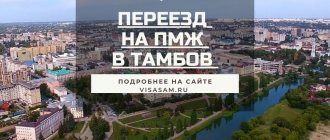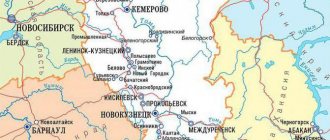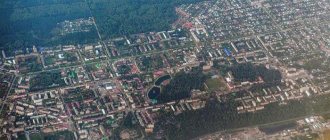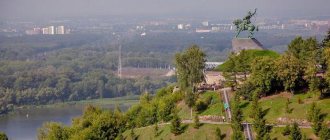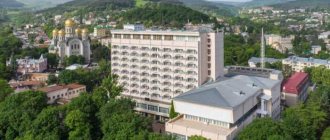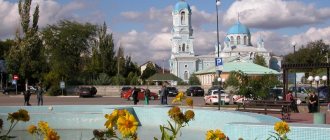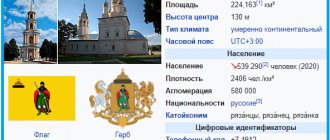The question of where Tambov is located will confuse some people, although the name of the city is well known to every Russian. The city, which has preserved its originality, historical memory, is clean, surrounded by flowers, is considered the most environmentally friendly city in Russia. They call it provincial, but is that a minus in our time? No, that's a big plus.
Where is Tambov located?
Tambov is located in the middle of the East European Plain and belongs to the central Chernozem region. Its border runs with the Voronezh, Lipetsk, Saratov, Penza and Ryazan regions. It can be called the center of European Russia. The region is small in area, only 34,462 square kilometers. Just over one million people live in it, including about 300 thousand in the city of Tambov.
The Tambov region is located in a forest-steppe zone. Its main wealth is black soil. Two rivers flow through the city: Tsna and Studenets, which connect exactly in the place where Tambov is located. From Moscow to the regional center 480 kilometers. A railway passes through the city, connecting it with many centers of Russia. The city has a train station. There are also highways to the center and south of the country, to the Volga region.
Economy
Industry
Mechanical engineering (production of chemical equipment, components and spare parts for cars and tractors, equipment for the textile industry, instrument making, household refrigerators, forging and pressing machines), chemical, light, food (sugar, meat, flour and cereals, oil, canning) .
Sugar production: Several sugar factories operate on the lands of the region, the largest is located in the Nikiforovsky district in the river. Dmitrievka village. Now the Nikiforov Sugar Factory processes on average 6 tons of sugar beets per day, 130-150 tons of raw sugar annually.
Department of Housing and Utilities
The housing and communal services of the region currently includes 265 public utility organizations providing heat, gas, electricity, water supply and sanitation services. They employ about 17 thousand people. 230 organizations of the public utility complex are private, which is 86.8% of the total. Large system operators operate in the region. Among them are OJSC Tambov Utility Systems, Tambov Grid and Tambov Energy Sales - Eastern Regional Generation, LLC Tambovteploenergoresurs. Of the total volume of services in 2011, they sold 57.2% of water and about 80% of thermal energy. The total area of the region's housing stock, as of January 1, 2011, is 26,260.9 thousand square meters, including 12,306.2 thousand square meters - the area of apartment buildings.
Transport
Previously, along the Tsna River, the center of the region, the city of Tambov, was also accessible to small river vessels from the network of the European part of Russia.
In the north-west, in the village of Pervomaisky, there is a large compressor station on the Urengoy-Uzhgorod gas pipeline, a line to Morshansk from the Central Asia-Center gas pipeline.
In the central part of the region there are oil product pipelines "Samara-Sumy" and "Samara-Uzhgorod", as well as the largest oil pipeline "Druzhba", in the village of Novonikolskoye, Michurinsky district, there are significant compressor, dispatch and loading capacities of the Transneft and Transnefteproduct pipelines.
Among the power transmission lines, we can highlight a branch from the Volgogradskaya HPP-Moscow main line to Tambov, and the Tambov-Penza, Tambov-Ryazanskaya GRES lines.
Agriculture
The agro-industrial complex of the Tambov region produces more than 20% of the gross regional product. More than 42% of the region's population lives in the village. The main wealth of the region is chernozem soils. The region's land fund includes more than 3.4 million hectares, its structure is dominated by agricultural land (78.9%), of which chernozems account for 87%.
Taking this into account, the development of the agro-industrial complex is recognized as a priority direction for the development of the region.
At the end of 2011, the value of gross agricultural output amounted to 50.8 billion rubles, the volume of shipped products from the processing industry amounted to 43.7 billion rubles. The value index of gross agricultural output by 2010 was 164.3%, including crop products - 209.4%, livestock products - 103.0%, processing industry - 116.1%.
A significant increase in production for all types of products made it possible not only to overcome the results of the unfavorable 2010, but also to increase the annual growth rate of agricultural production in the Tambov region. For the period from 2006 to 2011, the growth rate was 62%, the average annual growth rate was 8.4%, which is higher than the average for Russia and the Central Federal District. The volume of investments in the region's agro-industrial complex in 2011 amounted to more than 25 billion rubles. In recent years, the growth has more than tripled. In 2012, the volume of investments will amount to more than 28 billion rubles. Investor funds are allocated for the construction of livestock complexes for the production of pork and poultry, dairy complexes, and elevator capacities for storing and processing grain.
In crop production, the main efforts of farmers are aimed at increasing production, improving its quality through the introduction of highly productive varieties and the wider use of modern resource-saving technologies.
From the federal and regional budgets, agricultural producers are subsidized for the costs of purchasing mineral fertilizers, elite seeds, crop insurance, and carrying out work on uprooting dead perennial plantings and planting new ones. In total, more than 412.2 million rubles were allocated for these purposes in 2011.
The gross grain harvest in 2011 amounted to 2.0 million tons with a yield of 22.5 c/ha. The resulting gross grain harvest will fully satisfy the internal needs of the region and will allow the sale of more than 800 thousand tons of grain outside the region. In the coming years, it is planned to increase the volume of grain production in the region to 4 million tons. Along with the increase in grain production, storage and deep processing capacities are increasing. In 2011, elevator complexes with a simultaneous storage capacity of 350 thousand tons were built. By 2014, it is planned to build elevator storage capacity of 1.3 million tons. By 2015, feed production in the region will be increased 6 times (up to 600 thousand tons), taking into account the commissioning of livestock complexes. Currently, the region’s own grain processing capacity is 20%, with plans to increase it to 50%.
Through the use of modern resource-saving technologies, in 2011 the highest gross yields and yields of sugar beets and sunflowers were achieved in the entire history of the region. The yield of sugar beet is 436.5 c/ha, sunflower is 16.8 c/ha.
The gross harvest of sugar beets amounted to 5.1 million tons (2.7 times higher than in 2010), which is more than 11% of the gross production of sugar beets in the Russian Federation.
The production volumes of vegetables and potatoes have increased.
Beef farming is one of the most dynamically developing sectors of the agro-industrial complex. The number of pigs in the Tambov region for the period from 2009 to 2011 increased more than 2 times. The growth of livestock and meat production was achieved through the construction of new livestock complexes. In 2010, investment projects for pig breeding were put into operation at Tambovmyasoprom LLC, LLC. In December 2011, complexes were put into operation at RASK LLC for 10 thousand tons of pork meat, and Resurs LLC for 12.5 thousand tons of pork meat.
A lot of work is being done in the region to develop poultry farming. In the fourth quarter of 2011, the Inzhavinskaya Poultry Factory began production activities with a production capacity of 100 thousand tons of poultry meat per year.
One of the priority areas is the development of dairy farming in small forms of farming. A fundamentally new base for dairy cattle breeding is being created in the region using promising economically feasible projects that will implement modern technological solutions for the procurement of feed, feeding, keeping, milking cows, and reaching European level productivity.
In the Tambov region, special attention is paid to stimulating the development of small businesses. In the region there are 270.0 thousand personal subsidiary plots of citizens, 2512 peasant (farm) households. In this regard, the task is set not only to increase production volume in this category of farms, but also social tasks - reducing the unemployment rate, as well as ensuring self-employment of rural residents. It should be noted that small forms of farming produce more than half of the region’s agricultural products, which is why they enjoy significant government support.
They cultivate grain crops, sugar beets, sunflowers, fodder crops, and potatoes. Gardening is developed. Based on the processing of grain and potatoes, alcohol, starch and molasses are produced. The region's livestock industry specializes in breeding dairy and meat cattle, pigs, sheep and poultry.
Population of the Wild Field
The lands where Tambov and many ancient cities are located are located on the territory that was once called the Wild Field. These were uncultivated fertile steppes, suitable for agriculture and practically uninhabited. Raids by nomadic tribes prevented the development of these places, located on the border with Russia. Part of the Wild Field was under the control of the Don, Dnieper and Khoper Cossacks, but this was not enough. Decisive measures were needed on the part of the state to protect the population from the attacks of nomads.
These measures included the construction of defensive structures: fortresses, earthen ramparts, fences and ditches. A guard and village service was organized. In the built fortresses and along the line of defense there was a settlement of service people. Thus, modern cities were founded: Voronezh, Orel, Yelets, Belgorod, Volgograd, Penza, Rostov, Lugansk, Donetsk, Kharkov, Kirovograd, Sumy, Nikolaev, Poltava and many others.
History[edit | edit code]
Coat of arms of the Tambov province
About one and a half thousand years ago, tribes of the Mordovian-Moksha ethnic group lived on the territory of the present Tambov region.
The final settlement of the Tambov region by Russians occurred in the 17th century. To protect the southern borders from Tatar raids and for the further development of the Black Earth Region, the Russian government built the fortified cities of Kozlov (1635) and Tambov (1636).
As an independent administrative unit, the Tambov region was separated from the Central Black Earth Region on September 27, 1937.
History of education
The city of Tambov is relatively young. The date of its formation is considered to be 1636. At this time, on a hill located at the confluence of the Tsna and Studenets rivers, where Tambov is currently located, a fortress was founded that protected the borders of Russia from raids by the Nogais and Crimean Tatars. It was no coincidence that the fortress was located in the Wild Field area. It was a practically uninhabited territory, without any borders, where settlers from Russia went.
The construction of the fortress was led by governor Roman Boborykin. The location chosen for construction was excellent; it seemed that nature itself was protecting the structure from uninvited guests. A ditch was dug from the side of the rivers, which rested its ends against them, from where water flowed into it. Six-meter-high walls made of oak logs were built on three unprotected sides. The fortress garrison numbered up to 1000 people.
Population[edit | edit code]
According to the results of the 2010 All-Russian Population Census[1], the population of the region is 1,092,396 people. Population density is 31.7 people/km².
The population is almost mono-national: the majority are Russian.
| People | Number of people in 2002, thousand () |
| Russians | 1136,9 |
| Ukrainians | 10,8 |
| Armenians | 4,3 |
| Gypsies | 3,0 |
| Tatars | 2,7 |
| Belarusians | 2,4 |
| Azerbaijanis | 2,3 |
| Germans | 1,1 |
| Yazidis | 1,0 |
| nations with a population of more than 1000 people are shown |
Development of Tambov in the 18th century
The place where the city of Tambov is located has long been famous for its fertile soils. Gradually this land became the breadbasket of Russia. High harvests allowed local merchants to trade in grain, but despite this, for a long time Tambov looked like a large village, and only the fortress gave it away as a city. Only after Tambov was designated a provincial center did it begin to flourish and develop. The city plan was completed by the capital's architects, beautiful buildings and pavements began to appear, and it began to take on the appearance of a city.
At the end of the 18th century, the great poet Gabriel Derzhavin was appointed governor of the city, who was obsessed with the idea of improving the lives of the townspeople by organizing navigation on the Tsna River. The city needed construction timber and stone, which was plentiful down the river from where Tambov was located. In 1786, a public school was opened, a few years later, following the example of Tambov, which at that time became a provincial city, six more schools were opened in its districts.
Power
The governor of the region is Oleg Ivanovich Betin. He was first appointed to this post in 1995, but lost to the communist Alexander Ryabov in December. In December 1999, he won the gubernatorial elections in the second round, and confirmed his powers at the next elections in December 2003.
On December 18, 2005, elections to the regional Duma took place. 25 seats were distributed according to party lists and another 25 - in single-mandate constituencies.
United Russia received 40.52% of the votes on party lists and 15 out of 25 seats in single-mandate constituencies (28-29 out of 50 seats in total).
The seven percent barrier was also overcome by:
The following also received seats in single-member constituencies:
Tambov. Century XIX
It was at this time that Tambov declared itself as the breadbasket of Russia. The city hosted annual fairs (Tenth and Kazan), which attracted merchants from all over central Russia. Tambov bread was sold abroad. The city was built up with good-quality houses and public buildings: a cadet corps, a noble assembly, a city society, a craft council, a public library, and an institute for noble maidens.
In 1824, the first gymnasium opened, and a year later the first paved street appeared. A hospital and an almshouse, 3 hotels, 7 taverns, clothing stores, and grocery stores were built. There were two monasteries and many churches in the city, which even now give the city a unique flavor and tranquility.
Content
- 1 Geography
- 2 History
- 3 Administrative-territorial structure and local government 3.1 Territorial organization of local government
- 3.2 Cities of the Tambov region
- 3.3 Settlements of the Tambov region
Century XX
The beginning of the century coincided with the beginning of the emergence of industrial production in the city. The province was exclusively agricultural, in which a large number of wealthy peasants lived. Tambov, where there were very few representatives of the working class, greeted the February and then the October revolutions of 1917 with great enthusiasm. This was due to the distribution of land, according to the “Decree on Land” proclaimed by the Bolsheviks.
The peasants began to arbitrarily seize the land of landowners and large landowners, but ran into resistance from the authorities. Mass conscription into the Red Army began as the Civil War was raging. This caused discontent. The region became a hotbed of strong uprisings against Soviet power, the most famous of which was the Antonovsky rebellion. They were all brutally suppressed.
The Soviet years were marked by the opening of new schools, which were formed in connection with the elimination of general illiteracy. In the 60s, the industrialization of the city began. New enterprises were built and put into operation. A huge amount of housing has been built. Clinics, kindergartens, stadiums, music schools and much more were opened. Everything that Tambov has today was built during the Soviet years.
Map
| Tambov: maps |
Tambov: photo from space (Google Maps) Tambov: photo from space (Microsoft Virtual Earth)
| Tambov. Nearest cities. Distances in km. on the map (in brackets along roads) + direction. Using the hyperlink in the distance , you can get the route (information courtesy of the AutoTransInfo website) | |||
| 1 | Pokrovo-Prigorodnoye | 4 () | SW |
| 2 | Builder | 7 () | YU |
| 3 | Novaya Lyada | 14 (14) | IN |
| 4 | Kotovsk | 15 (15) | YU |
| 5 | Rasskazovo | 29 (30) | IN |
| 6 | Znamenka | 33 (42) | YU |
| 7 | Satinka | 41 (58) | YU |
| 8 | Dmitrievka | 48 (55) | Z |
| 9 | Bondari | 48 (61) | NE |
| 10 | Sosnovka | 57 (62) | WITH |
| 11 | Zavoronezhskoe | 63 (67) | Z |
| 12 | Michurinsk | 68 (73) | Z |
| 13 | Rzhaksa | 74 (86) | SE |
| 14 | Pichaevo | 75 (98) | NE |
| 15 | Petrovskoe | 81 (103) | Z |
| 16 | Inzhavino | 82 (106) | SE |
| 17 | Staroyurevo | 83 (110) | NW |
| 18 | Tokarevka | 83 (112) | YU |
| 19 | Morshansk | 84 (82) | WITH |
| 20 | Mordovo | 84 (91) | SW |
| 21 | Kirsanov | 86 (93) | IN |
| 22 | Gavrilovka 2nd | 90 (116) | IN |
| 23 | Dobrinka (Lipetsk region) | 90 (119) | SW |
| 24 | Pervomaisky | 97 (115) | NW |
| 25 | Uvarovo | 98 (109) | SE |
| 26 | Zherdevka | 98 (112) | YU |
| 27 | Will clean | 103 (115) | IN |
| 28 | Mud | 105 (106) | Z |
| 29 | Ertil | 108 (149) | SW |
| 30 | Dobroye (Lipetsk region) | 111 () | Z |
a brief description of
Located in the central part of the Oka-Don (Tambov) plain, on the left bank of the river. Tsna (Volga basin), at the confluence of the river. Studenets, in the southern zone of the Central Russian forest-steppe, 480 km southeast of Moscow. Railway junction lines and highways.
The climate is moderate continental. Winter is moderately cold, with stable snow cover. The average January temperature is -11. Summer is warm, the average temperature in July is +20. Precipitation is about 500 mm per year. Droughts are common.
Territory (sq. km): 91
Information about the city of Tambov on the Russian Wikipedia site
Historical sketch
In 1636 (considered the year of the founding of Tambov), steward Roman Boborykin was instructed to build a fortress near the crossing on the river. Tsna opposite the mouth of the river. Tambov (now Lesnoy Tambov), on the ancient Ordabazarnaya road that connected Moscow with the Lower Volga region. The charter of Tsar Mikhail Fedorovich prescribed: “... on a field on the Tsna River at the mouth of the Lipovitsa River, establish the city of Tonbov, and arrange all sorts of service people in it.”
However, this place turned out to be inconvenient and the city was built 20 versts down the Tsna, but retaining the name according to the original landmark of the Tambov River. The name of the river is pre-Russian, it is explained from the Mordovian tombaks “swampy” or the ancient Finnish tamb “oak”.
In 1647, a system of complex fortifications was built - the Tambov Wall, which became part of the Simbirsk abatis line. Tambov successfully repelled many attacks by steppe nomads: Nogai Tatars and Kalmyks in 1656 and 1660, an attack by the troops of S.T. Razin in 1670, the siege of L. Khokhlach (ataman of the troops of K.A. Bulavin) in 1706. In the mid-18th century. Tambov is losing its significance as a military fortress and is developing as the center of an agricultural region.
In 1667, Elder Joseph founded the Kazan Monastery in Tambov. In 1685, near Tambov, Bishop Pitirim of the Tambov diocese founded the Tregulyaev Predtechensky Monastery, and in 1690, the Ascension Convent.
In 1708 it was assigned to the Azov province (since 1725 - Voronezh province), since 1719 the center of the Tambov province. Since 1779 - the center of the Tambov governorship (since 1796 Tambov province).
In the 18th century Tambov was a major cultural center. In 1786-88. the head of the Tambov governorship was the poet G.R. Derzhavin. He founded a theater, a printing house, a public school, and laid the foundation for the improvement of the city. A theological seminary was opened in 1787, a gymnasium in 1825, and a public library in 1830. In 1900, a music school was founded.
Since the 1860s There was street lighting, and since 1885 there was a water supply.
In 1856, in the provincial city of Tambov, Tambov province, there were 13 churches, 2553 houses, 143 shops.
In 1870, the Ryazan-Ural Railway passed through Tambov. The city becomes a major center of grain trade, enterprises for processing agricultural products, as well as small metalworking factories, appear. In 1913, about 2.4 thousand workers were employed at industrial enterprises in Tambov.
In 1920-21 in the city there was a headquarters for suppressing the uprising of peasants of the Tambov province under the leadership of A.S. Antonov.
Since 1928, Tambov has been part of the Central Chernozem Region, since 1934 - the Voronezh Region, since 1937 - the center of the Tambov Region.
In 1938, 3 districts were formed: Leninsky, Industrial and Central. 04/16/1940 The industrial district of Tambov was transformed into the independent city of Kotovsk. In 1953, the Industrial District was again formed - from parts of the Central and Leninsky districts. In 1959, the Central District of Tambov was abolished. In 1963, the Sovetsky district of Tambov was created.
In the 1960s Intensive industrial development of Tambov began.
Municipal indicators
| Index | 1990 | 1999 | 2001 | 2003 | 2005 |
| Demography | |||||
| Number of births, per 1000 population | 12.6 | 6.7 | 7.1 | 8.4 | 8.4 |
| Number of deaths, per 1000 population | 11 | 14.2 | 14.8 | 16.1 | 15.9 |
| Natural increase (decrease), per 1000 population | 1.6 | -7.5 | -7.7 | -7.7 | -7.5 |
| Standard of living of the population and social sphere | |||||
| Average monthly nominal accrued wages, rub. | 0.263 | 1107.8 | 2197.4 | 4136.9 | 6249.4 |
| Average housing area per inhabitant (at the end of the year), sq.m. | 14.1 | 17.3 | 18.2 | 19.6 | 20.5 |
| Number of preschool institutions, pcs. | 88 | 61 | 59 | 59 | 55 |
| Number of children in preschool institutions, thousand people | 17.6 | 8.3 | 8.2 | 8.3 | 8.7 |
| Enrollment of children in preschool educational institutions (at the end of the year), as a percentage of the number of children of the corresponding age, % | 69.1 | 67.9 | |||
| Number of daytime educational institutions (at the beginning of the school year), pcs. | 37 | 53 | 54 | 54 | 54 |
| Number of students in daytime educational institutions, thousand people | 35.9 | 39.6 | 36.4 | 32.1 | 27.5 |
| Number of doctors, people. | 1912 | 2075 | 2011 | 2019 | 2036 |
| Number of nursing staff, people. | 5343 | 5030 | 4735 | 4961 | 4929 |
| Number of hospital institutions, pcs. | 19 | 18 | 16 | 16 | 14 |
| Number of hospital beds, thousand units | 6.8 | 6.6 | 6.3 | 6.1 | 6 |
| Number of medical outpatient clinics, pcs. | 30 | 34 | 33 | 32 | 32 |
| Capacity of medical outpatient clinics, visits per shift, thousand units. | 10.4 | 11 | 10.7 | 10.7 | |
| Number of registered crimes, pcs. | 2902 | 4316 | 4515 | 3847 | 7126 |
| Persons who committed crimes were identified, persons. | 1422 | 3111 | 2758 | 2441 | 2142 |
| Economy, industry | |||||
| Number of enterprises and organizations (at the end of the year), pcs. | 6563 | 6788 | 20837 | 13746 | |
| Number of operating enterprises by type of activity: mining (at the end of the year), pcs. | 2 | ||||
| Number of operating enterprises by type of activity: manufacturing (at the end of the year), pcs. | 209 | ||||
| Number of operating enterprises by type of activity production and distribution of electricity, gas and water (at the end of the year), pcs. | 59 | ||||
| Volume of shipped goods of own production by type of mining (in actual prices), million rubles. | 0 | ||||
| Volume of shipped goods of own production by type of manufacturing (in actual prices), million rubles. | 11676.5 | ||||
| Volume of shipped goods of own production by type of production and distribution of electricity, gas and water (in actual current prices), million rubles. | 2244.7 | ||||
| Construction | |||||
| Volume of work performed by type of activity “Construction” (until 2004 - volume of work performed under construction contracts), million rubles. | 473.5 | 802.9 | 1777.5 | 2740.9 | |
| Commissioning of residential buildings, thousand sq.m. of total area | 113.5 | 78.1 | 96.7 | 126.1 | 162.7 |
| Commissioning of residential buildings, apartments | 2244 | 925 | 1119 | 1490 | 1774 |
| Commissioning of preschool institutions, places | 426 | 0 | 0 | 0 | 0 |
| Commissioning of educational institutions, places | 700 | 0 | 300 | 180 | 50 |
| Commissioning of hospital facilities, beds | 0 | 0 | 0 | 112 | 54 |
| Commissioning of outpatient clinics, visits per shift | 800 | 240 | 750 | 0 | 0 |
| Transport | |||||
| Number of bus routes (in intracity traffic), pcs. | 25 | 29 | 39 | 39 | |
| Number of trolleybus routes, pcs. | 15 | 15 | 15 | 15 | |
| Length of operational trolleybus lines (at the end of the year), km | 43.2 | 42.7 | 42.7 | ||
| Number of passengers transported by buses per year (in intracity traffic), million people. | 57.8 | 33.3 | 23.8 | 19.9 | 9.1 |
| Number of passengers transported by trolleybuses per year, million people. | 68.3 | 54.9 | 47.9 | 40.7 | 15 |
| Connection | |||||
| Number of telephone sets of the city public telephone network, thousand units. | 51.5 | 91.2 | 97.2 | 97 | 103.3 |
| Number of residential telephone sets of the city public telephone network, thousand units. | 37.4 | 78 | 83.5 | 84.8 | 89.7 |
| Number of payphones of the city telephone network (including universal ones), pcs. | 547 | 535 | |||
| Trade and services to the population | |||||
| Retail trade turnover (in actual prices), million rubles. | 0.6 | 5318 | 8226.1 | 11049.9 | 16753.7 |
| Retail trade turnover (in actual prices), per capita, rub. | 2.2 | 16958 | 26743 | 37933 | 58599.8 |
| Index of physical volume of retail trade turnover, % compared to the previous year | 104.7 | 113 | |||
| Index of physical volume of public catering turnover, % compared to the previous year | 113 | 105.1 | |||
| Number of stores, pavilions (at the end of the year), pcs. | 137 | 85 | |||
| Sales area of shops, pavilions (at the end of the year), sq.m. | 33.5 | 23255.1 | |||
| Volume of paid services to the population (in actual prices), million rubles. | 0.092 | 795.3 | 1806.2 | 3155.9 | 5236.1 |
| Volume of paid services to the population (in actual prices), per capita, rub. | 0.3 | 2535.9 | 5871.9 | 10833.8 | 18314.6 |
| Volume of household services to the population (in actual prices), million rubles. | 0.03 | 154.3 | 352.4 | 623.5 | 817.8 |
| Volume of household services to the population (in actual prices), per capita, rub. | 0.098 | 492 | 1145.5 | 2140.5 | 2860.4 |
| Investments | |||||
| Investments in fixed assets (in actual prices), million rubles. | 0.159 | 471.8 | 734.5 | 2026.9 | 2762.1 |
| Share of investments in fixed assets financed from budgetary funds in the total volume of investments, % | 19.4 | 22.7 | 30.3 | 36.9 | |
Data sources:
- Regions of Russia. Main characteristics of the constituent entities of the Russian Federation: statistical collection. Goskomstat of Russia. - M:, 2003.
- Regions of Russia. Basic socio-economic indicators of cities. Statistical collection. Rosstat. - M:, 2005. p. 78
- Transport in Russia: Statistical collection. Goskomstat. - M:, 2003. pp. 112, 122
- Transport in Russia: Statistical collection. Rosstat. - M:, 2005. pp. 119, 129
- Regions of Russia. Basic socio-economic indicators of cities. 2006. Statistical collection. Rosstat. - M:, 2006. p. 78
Culture, science, education
Research Institute of Chemicals for Polymer Materials, Research Institute of Organic Intermediates and Dyes, All-Russian Research Institute of Rubber Engineering.
Institutes: chemical engineering, pedagogical, culture.
Theatres: drama, puppet theaters. Philharmonic.
Museum of Local Lore. Art Gallery. Museum-Estate of the Chicherins.
Museums, galleries, exhibition halls
House-Museum of G.V. Chicherin 392000, Tambov, st.
Sovetskaya, 63 Phone(s): (4752) 72-4400 Museum of Sin 392000, Tambov, st. Sovetskaya, 93 Phone(s): (915) 881-3001 Website: https://tambovia.ru/muzei_grekha.html
Tambov Regional Art Gallery 392000, Tambov, st. Sovetskaya, 97 Phone(s) Website: https://www.tambovart.ru/
Tambov Regional Museum of Local Lore 392000, Tambov, st. Derzhavinskaya, 3 Phone(s): (4752) 72-6313 Website: https://www.tambovmuseum.ru/
Tambov Regional Museum of the History of Medicine 392023, Tambov, st. Gogolya, 6 Phone(s): (4752) 75-1695 Website: https://www.tstu.ru/win/kultur/museum/istmed/istmed.htm
Architecture, sights
The city is located on the banks of the Tsna. Its historical center was formed on the left bank of the river. The right bank has almost no urban development and is occupied by forest parks, meadows and garden plots.
In 1781, a general plan with a radial street system was approved.
Church of the Intercession (1763-69), Kazan Church (1791), former Bishop's House (1791), Summer Church (1818), Transfiguration Cathedral (founded in 1694, rebuilt in 1797, expanded in 1839-40), main post office ( 1786), former theological seminary (1785-1805) with a new building (1825, now the Institute of Chemical Engineering), gymnasium (2 buildings, the first - 1825), Gostiny Dvor (1836-37), public library (1842), Alexander Institute of Nobles maidens (1843, in 1878 a new building was added; now the Pedagogical Institute), an orphanage (first half of the 19th century), a real school (second half of the 19th century, now a secondary school), a women's gymnasium (now the Institute for Advanced Medical Studies), a stable ( mid-19th century, in the courtyard there is a round arena), the Assembly of the Nobility (1897), the Naryshkin Reading Room (1892, now the Art Gallery), etc.
City Garden (founded in 1870, now the Park of Culture and Leisure).
| Population by year (thousands of inhabitants) | |||||||
| 1811 | 16.8 | 1956 | 150 | 1996 | 318.1 | 2013 | 281.8 |
| 1840 | 16.8 | 1959 | 172.2 | 1998 | 316.9 | 2014 | 285.0 |
| 1856 | 22.0 | 1962 | 189 | 2000 | 312.0 | 2015 | 288.9 |
| 1861 | 32 | 1967 | 211 | 2001 | 309.1 | 2016 | 288.4 |
| 1863 | 36.0 | 1970 | 229.8 | 2003 | 293.7 | 2017 | 290.4 |
| 1897 | 48.0 | 1973 | 245 | 2005 | 287.2 | 2018 | 293.7 |
| 1913 | 70.8 | 1976 | 260 | 2006 | 284.5 | 2019 | 291.7 |
| 1914 | 71.2 | 1979 | 270.1 | 2007 | 281.8 | 2020 | 292.1 |
| 1923 | 69.9 | 1982 | 281 | 2008 | 279.8 | 2021 | 289.7 |
| 1926 | 73.9 | 1986 | 300 | 2010 | 277.5 | ||
| 1931 | 83.9 | 1989 | 304.6 | 2011 | 280.2 | ||
| 1939 | 123.2 | 1992 | 310.6 | 2012 | 280.9 | ||
Nowadays
No other city has as many positive reviews written about it as Tambov and its residents. The overwhelming majority of reviews are from visitors. The city is small, spotlessly clean and green. It seems that the forest begins right in the city, as there are many parks and squares. There are many sports facilities, modern hotels, shopping supermarkets, there is a central market in Tambov, where the TSUM shopping center is located. And yet, the city is small and a little provincial.
Fate saved the city from the destructive wars that swept across Russia, from too irresponsible leaders trying to reshape not only the city, but also the country for the sake of personal interests. The destruction affected only Orthodox churches, but those that remained, restored and rebuilt, now serve as decoration for the city and create its uniqueness. Here you can see merchant Tambov, buildings and monuments of the Soviet era, and modern buildings.
Fate saved it from being renamed the city of Tukhachevsk; monuments were not demolished here. Tambov has always remained Tambov. Many people want to know where Zarechye is located in Tambov. On the territory of the Tambov region there are three settlements with this name: in the Tambov, Sosnovsky and Pichaevsky districts.
Administrative-territorial structure and local government
Territorial organization of local government
There are 307 municipalities in the Tambov region, of which:
Settlements
Settlements with a population of more than 5 thousand
as of January 1, 2011 [5]
|
What are the residents of the city of Tambov called?
“Tambov residents” or “Tambov residents”: only one name for the residents
regional center
Residents of Tambov are called by
the incorrect word “Tambovites”.
Interesting materials:
How to open EML format on Android? How to open fb2 format on android? How to open fb2 format? How to open iso format? How to open mdf format? How to open NEF format? How to open pptx format? How to open WMA format on Mac? How to open MPEG video? How to scan a document in text format?
